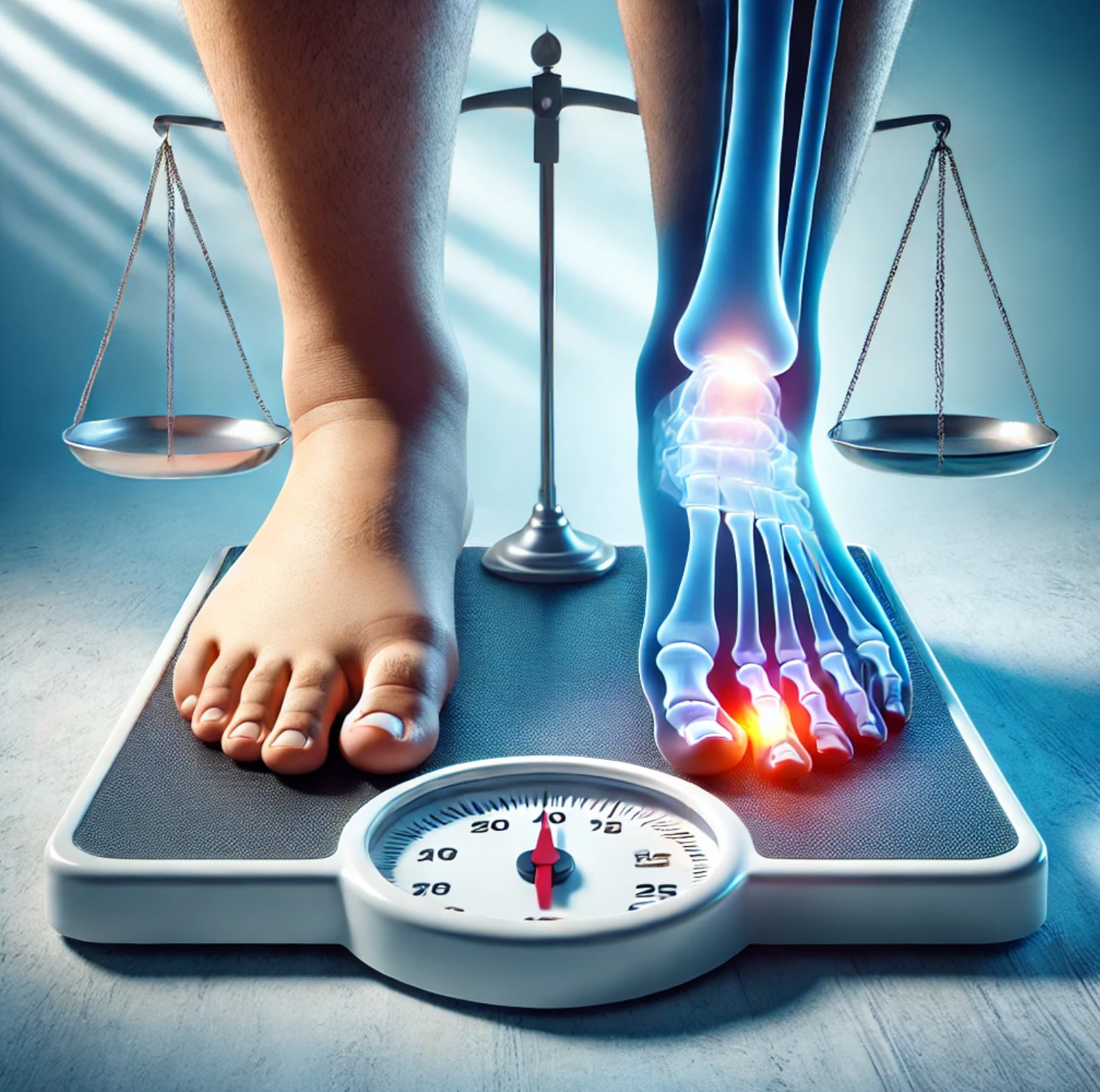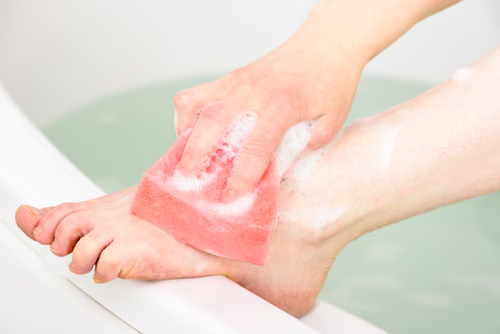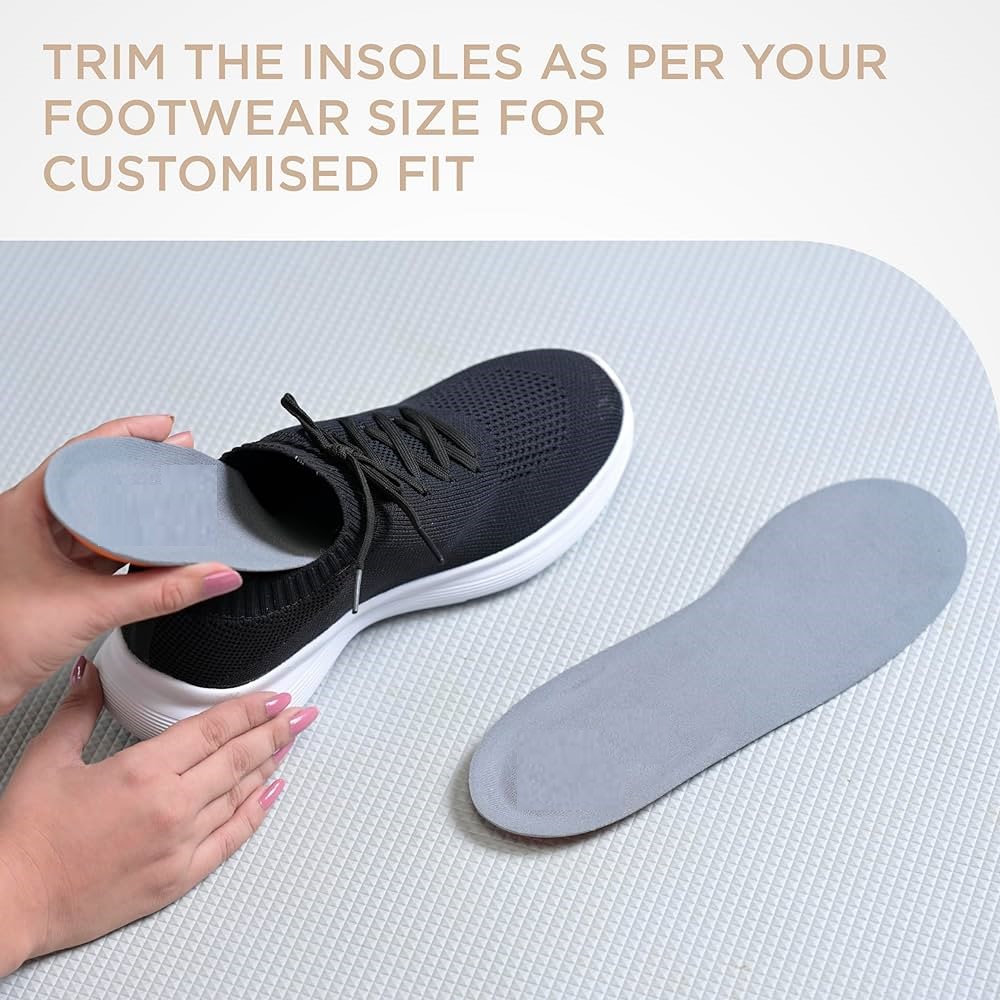Introduction
In high-stress jobs, our feet often take the brunt of the workload. Whether you’re a nurse running between patients, a retail worker standing for hours, or a construction worker navigating rough terrain, your feet endure significant stress daily. However, many people neglect foot care until they experience pain or injury.
Ignoring foot health can lead to chronic pain, reduced mobility, and even long-term health issues like back pain or poor posture. Understanding how to care for your feet can prevent problems before they start and keep you comfortable and active. In this guide, we’ll cover everything from choosing the right footwear to simple exercises that can relieve tension and pain.
Understanding Foot Problems in High-Stress Jobs

Common Foot Issues Faced by Workers
People in physically demanding jobs often experience:
- Heel pain (Plantar Fasciitis)
- Swollen feet and ankles
- Calluses and blisters
- Bunions and hammertoes
- Arch pain and flat feet
Causes of Foot Pain and Discomfort
Several factors contribute to foot discomfort in high-stress jobs, including:
- Standing for long hours on hard surfaces
- Wearing unsupportive or ill-fitting shoes
- Excessive walking or heavy lifting
- Poor posture and improper foot alignment
- Lack of movement, leading to poor circulation
Long-term Effects of Neglecting Foot Health
Ignoring foot pain can lead to:
- Chronic pain conditions
- Joint problems in knees and hips
- Reduced mobility and balance issues
- Increased risk of falls and injuries
Taking care of your feet early on can prevent these issues and improve overall job performance and comfort.
Choosing the Right Footwear
Wearing the right shoes is one of the most effective ways to protect your feet in high-stress jobs.
Importance of Comfortable and Supportive Shoes
Good shoes provide:
- Proper arch support
- Cushioning to absorb shock
- A snug but comfortable fit to prevent blisters
Features to Look for in Work Shoes
When shopping for work shoes, consider:
- Arch support: Helps distribute weight evenly
- Cushioning: Reduces impact on joints
- Non-slip soles: Prevents workplace falls
- Breathable material: Keeps feet dry and reduces sweating
Best Types of Shoes for Different Professions
- Healthcare workers: Sneakers or clogs with arch support
- Retail employees: Padded insoles and shock-absorbing soles
- Construction workers: Steel-toe boots with ankle support
- Office workers: Low-heeled, well-cushioned dress shoes
Investing in quality footwear is essential for preventing foot problems and improving comfort throughout the workday.
Proper Foot Hygiene and Care
Maintaining foot hygiene is crucial for preventing infections and discomfort.
Daily Foot Hygiene Routine
- Wash feet with warm water and mild soap daily
- Dry thoroughly, especially between the toes
- Apply moisturizer to prevent cracks and dryness
Importance of Moisturizing and Preventing Dryness
Cracked heels and dry skin can lead to infections and discomfort. Use a foot cream with:
- Shea butter
- Coconut oil
- Urea-based moisturizers
Nail Care and Dealing with Ingrown Toenails
- Trim toenails straight across to prevent ingrown nails
- Avoid cutting nails too short
- Soak feet in warm water if an ingrown nail occurs
Proper hygiene prevents foot infections, odors, and common problems like athlete’s foot.
Importance of Socks and Insoles
Socks and insoles play a crucial role in foot comfort and support.
Choosing the Right Socks for Comfort and Support
Look for socks that:
- Wick moisture away (cotton or wool blend)
- Provide mild compression to improve circulation
- Have extra padding in high-pressure areas
Benefits of Using Orthotic Insoles
Orthotic insoles can:
- Provide better arch support
- Reduce foot fatigue
- Improve alignment and balance
How Compression Socks Help Reduce Swelling
Compression socks:
- Improve blood flow
- Reduce leg and foot swelling
- Prevent varicose veins
Wearing the right socks and insoles can make a huge difference in how your feet feel at the end of a long workday.
Exercises to Strengthen and Relax Feet
Foot exercises can help prevent pain and improve overall strength and flexibility.
Simple Foot Stretches to Relieve Tension
- Toe Stretch: Sit down, extend one leg, and pull your toes back gently for 10–15 seconds.
- Calf Stretch: Stand facing a wall, place one foot behind the other, and lean forward while keeping your back heel on the ground.
- Plantar Fascia Stretch: Roll a frozen water bottle under your foot for a soothing massage.
Strengthening Exercises for Better Foot Support
- Toe Curls: Place a towel on the floor and use your toes to scrunch it up.
- Heel Raises: Stand on your toes, hold for a few seconds, and slowly lower down.
- Ankle Rotations: Rotate your ankles in circular motions to improve flexibility.
Massage Techniques to Relieve Soreness
- Use a tennis ball or massage roller to roll under the foot.
- Apply gentle pressure to sore areas using your thumbs.
- Soak feet in warm water with Epsom salt for muscle relaxation.
Performing these exercises daily can improve circulation, strengthen the foot muscles, and relieve tension from prolonged standing or walking.
Managing Foot Pain at Work
Pain relief techniques can help workers stay comfortable throughout the day.
Quick Pain Relief Techniques
- Shift weight frequently to avoid putting pressure on one area.
- Wiggle your toes and rotate your ankles when standing for long periods.
- Elevate your feet during breaks to reduce swelling.
How to Use Ice Packs and Warm Baths for Foot Relief
- Ice Therapy: Apply an ice pack for 15–20 minutes to reduce inflammation.
- Warm Water Soak: A 15-minute soak in warm water helps relax tight muscles.
Over-the-Counter Pain Relief Options
- Use anti-inflammatory creams containing menthol or arnica.
- Consider taking ibuprofen or acetaminophen for severe pain (consult a doctor first).
- Use cushioned gel inserts for extra support.
By using these pain relief methods, workers can manage foot discomfort effectively and prevent it from worsening.
Preventing Foot Injuries in the Workplace
Workplace injuries can severely impact foot health, so preventive measures are crucial.
Workplace Safety Tips to Avoid Injuries
- Wear protective footwear if working in hazardous environments.
- Avoid walking barefoot, even in break rooms.
- Use non-slip mats on slippery floors.
How to Protect Feet from Extreme Conditions
- In cold weather, wear insulated boots to prevent frostbite.
- In hot environments, choose breathable footwear to prevent excessive sweating and infections.
When to Seek Medical Help for Foot Pain
- If pain persists despite home treatments.
- If there is swelling, redness, or a burning sensation.
- If you experience numbness or tingling in your feet.
Being proactive about foot safety can prevent long-term injuries and workplace-related foot problems.
The Role of Diet in Foot Health
Nutrition plays a major role in keeping feet healthy and strong.
Nutrients Essential for Strong and Healthy Feet
- Calcium & Vitamin D: Strengthens bones and prevents fractures.
- Magnesium: Reduces muscle cramps.
- Omega-3 Fatty Acids: Helps with inflammation and joint pain.
Foods to Avoid That Can Worsen Foot Problems
- Processed foods high in sodium (can cause swelling).
- Sugary drinks and snacks (can contribute to inflammation).
- Excess caffeine (can dehydrate and affect circulation).
Hydration and Its Impact on Foot Swelling
- Drinking enough water reduces water retention and swelling.
- Herbal teas like ginger or chamomile can aid circulation.
Maintaining a healthy diet can significantly improve foot health and prevent common issues like swelling and inflammation.
The Connection Between Foot Health and Overall Well-being
Poor foot health doesn’t just affect the feet—it impacts the entire body.
How Foot Pain Affects Mental and Physical Health
- Persistent pain can lead to stress and reduced job performance.
- Discomfort in the feet can affect posture, leading to back and knee pain.
The Importance of Maintaining Proper Posture
- Standing and walking with correct posture reduces foot strain.
- Using ergonomic workstations can prevent foot fatigue.
Seeking Professional Help: Podiatrists and Physical Therapists
- A podiatrist can diagnose chronic foot conditions.
- Physical therapists can recommend exercises to strengthen feet and improve posture.
By prioritizing foot health, workers can improve their overall quality of life, enhance productivity, and avoid long-term discomfort.
Conclusion
Foot health is crucial for anyone working in a high-stress job. Neglecting foot care can lead to severe pain, discomfort, and even long-term health issues. By wearing the right footwear, practicing proper foot hygiene, using supportive insoles and socks, and performing foot exercises, you can keep your feet strong and pain-free. Simple habits like stretching, massaging, and staying hydrated can make a significant difference.
Your feet carry you through your daily routine—take care of them, and they’ll take care of you!
FAQs
1. What are the best shoes for standing all day?
The best shoes for standing all day include those with arch support, cushioning, and non-slip soles. Brands like Brooks, Hoka, and New Balance are popular among workers.
2. How can I prevent foot pain if I work long hours?
Wear supportive shoes, stretch your feet regularly, use orthotic insoles, and elevate your feet during breaks to reduce swelling.
3. What home remedies help relieve foot swelling?
Soaking feet in warm Epsom salt water, using compression socks, and drinking plenty of water can help reduce foot swelling.
4. Are there specific exercises for foot pain relief?
Yes, exercises like toe stretches, calf stretches, and rolling a tennis ball under your foot can relieve pain and improve flexibility.
5. When should I see a doctor for foot problems?
If you experience persistent pain, swelling, numbness, or difficulty walking, consult a podiatrist for a proper diagnosis and treatment plan.









Hello! Do yoou use Twitter? I’d llike tto follow youu if that would bbe
okay. I’m undoubtedly enjoyinng yiur blog and look
forward to new updates.